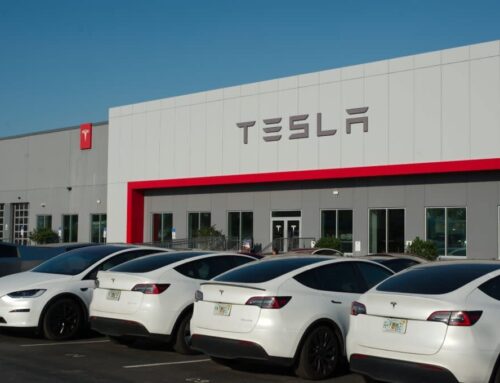The Mystery of the Senate’s Clean Energy Carveout
June 27, 2025

Senate Republicans tucked a carveout into their reconciliation bill that would allow at least one lucky renewable energy project to qualify for a major Inflation Reduction Act tax credit even after the law is all but repealed.
The only problem is, it’s near impossible to be sure right now who may actually benefit from this giveaway — and the mystery is driving me up the wall. I feel like Charlie Day in that episode of It’s Always Sunny in Philadelphia, stringing documents together and ranting like a lunatic.
The Senate bill would phase out the tech-neutral production tax credit starting next year and completely eliminate it by the start of 2028. For the past week and a half, I have been trying to solve the riddle of an exemption tucked into the language that would allow a wind or solar facility that is “part of a single project” to continue to take advantage of the tech-neutral production tax credit as it exists today, which means it would not begin to phase out until 2034.
To qualify for the exemption a project must, according to the Senate text, meet two conditions: It must produce more than 1 gigawatt of electricity, and be sited on federal lands where a “right-of-way grant or lease” had been given by the Bureau of Land Managementbefore June 16, which is the date the text was released.
Only a handful of projects in the U.S. could possibly fit that criteria. But every time I think I’ve identified one that will actually qualify, I learn a new fact that, to me, takes it out of the running.
Here’s why my head hurts so much: A renewables facility that would benefit from this language needs to be sited at least partially on federal lands. But because Trump isn’t issuing new right-of-way approvals or leases to most renewables projects right now, it likely had to get its right-of-way or its lease before he entered office. (The June 16 language feels like a bit of a red herring. Nothing that fits the other definitions has received these documents since the start of Trump 2.0.)
Then there’s another factor: The only projects that would benefit from this language are ones that haven’t started construction yet. Even if a project doesn’t have all of its permits for federal land use, its developer can build stuff like roads on any connected private lands and technically meet the deadline to start construction laid out in the new legislation. The construction start date is what counts — it doesn’t matter whether a project is placed in service and provides power to the grid years later, as long as it began construction before that deadline.
Taken together, all this means that a project that would benefit from this language probably has to be sited on federal lands and hold permits already … but for some reason can’t start construction to qualify for the program.
When I first started hunting for an answer, many people — including renewables advocates, anti-wind activists, and even some Senate staff in conversations with me — speculated that the language was a giveaway to two wind projects under construction in Wyoming, Chokecherry and Sierra Madre, which together make up what would likely be the largest wind farm in the U.S. if completed. These two projects are largely sited on federal lands and received all their approvals before Trump entered office.
I understand why people are pointing at Chokecherry and Sierra Madre. They are not expected to be online before 2029, and the House version of the bill would have locked them out of the production tax credit because it added a requirement that projects be “placed in service” — i.e. actively providing power to the grid — by around that same period. Any slippage in construction might have really hurt their finances. They’re also backed by a powerful billionaire, GOP donor and live entertainment power-broker Phil Anschutz, a man who made his initial fortune partially from fossil fuels.
Except … my colleagues and I are still not convinced. That’s because it is not clear that these two projects are at any actual risk of losing the production tax credit. They have been actively under construction for a long time, and the Senate bill killed the House’s “placed in service” requirement.
Another project floated is the Lava Ridge wind farm in Idaho, which was fully permitted under Biden, is largely sited on federal lands, and would produce more power than necessary to qualify for the exception. Hypothetically, this project would be a great candidate for being a beneficiary of the bill because Trump banned work on the project via executive order amid opposition from Idaho politicians, making a carveout to get more time a worthwhile endeavor.
Except … Senate Finance Chair Mike Crapo, the lead author of the pertinent section of the Senate reconciliation bill, was one of those Idaho politicians who pushed Trump to kill Lava Ridge. Why would he give a tax break to a project he wanted dead?
Then there was my personal best guess for the beneficiary: Esmeralda 7, an expansive set of proposed solar farms in the Nevada desert that, as proposed, would produce more than 5 gigawatts of power and is largely sited on federal land. Construction can’t begin until Esmeralda 7 gets its federal approvals, and the Trump administration was expected to complete that work by mid-summer.
Except … I reported last week that the permitting process for Esmeralda 7 is now indefinitely stalled. The project is at best still months away from getting its right-of-way approvals from the Trump administration, which recently pushed back timelines for finishing reviews of other large Nevada solar projects, too.
Ultimately, it will be difficult to glean who the lobbyist giveaway here is for unless the legislators who wrote it disclose their intentions. I reached out to the communications director for Republicans on the Senate Finance Committee to try and find out, but so far I’ve gotten crickets.
It may be that this language is revised and that future changes lay out the true beneficiary. Sometimes lawmakers will put the wrong date or word into a bill and they’ll edit it on the floor before a vote, chalking it up to a drafting error.
If senators decide to add back the “placed in service” requirement to capitulate to the House, this would easily be the Chokecherry-Sierra Madre giveaway. If Republicans were to shift forward the deadline for getting a right-of-way, Esmeralda 7 would qualify. Or maybe they could change some secret third thing and a different project I hadn’t considered will be revealed as the mastermind in the shadows.
Until then, I’ll be in my basement poring over more maps and going slowly insane.
Additional reporting was provided by Emily Pontecorvo.
Search
RECENT PRESS RELEASES
Related Post




